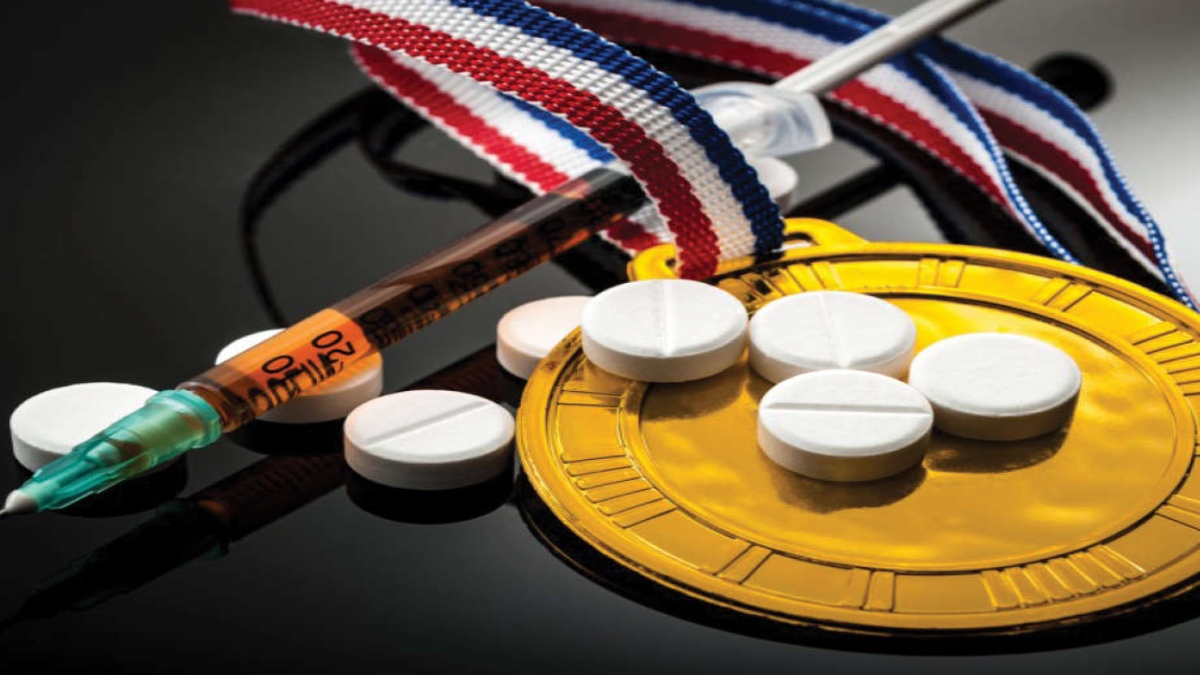


Doping is a grave problem that has infested the international sporting events worldwide. Hundreds of drugs and methods have been used for the purpose of sports performance enhancement. While this practice has been around for centuries, it still prevails in sports competitions at myriad levels. International sports federations, led by the International Olympic Committee, have for the past half century attempted to address this exigency, however, with little effect. It was expected that, with educational programs, testing, and supportive medical treatment, this substance-abusing behavior would attenuate. Unfortunately, this did not happen. In fact, even more powerful and undetectable doping techniques and substances are now being abused by professional athletes, as sophisticated networks of distribution have also developed.
Recently two very renowned Indian athletes— a wrestler, and a weightlifter— tested positive for doping. Methylhexaneamine (MHA), a prohibited stimulant was found in wrestler’s sample and five different steroids, testosterone, androsterone (AND), etiocholanolone (Etio), 5 alpha diol, 5 beta diol were found in weightlifter’s sample.
Methylhexaneamine, also known as 1,3-dimethylamylamine (DMAA), dimethylpentylamine (DMP) 4-methylhexan-2-amine, Geranamine has been reported in a number of doping cases this year including two at the 2010 Commonwealth Games in Delhi, one involving Nigerian athlete Damola Osayemi who was stripped of her gold medal in the 100m after methylhexaneamine was found in her sample. Samuel Okon, also from Nigeria and who finished sixth in the 110m hurdles, tested positive for the drug a few days later. In October 2010, nine Australian athletes have been found by Australian Sports Anti-doping Authority to have tested positive for the substance.
Steroids are synthetic drugs that imitate hormones our bodies produce naturally as part of maturation or in response to stress. Anabolic steroids imitate male sex hormones — the proper term for them is anabolic-androgenic steroids. The term anabolic refers to the process of building muscle tissue, while androgenic refers to male sex characteristics. Anabolic steroids are the kind typically abused by athletes. Combined with strength training, anabolic steroids cause muscle growth in their user, leading to improper use by some athletes for performance enhancing effects.
Steroid profiling is one of the most versatile and informative screening tools for the detection of steroid abuse in sports drug testing. Concentrations and ratios of various endogenously produced steroidal hormones, their precursors and metabolites including testosterone (T), epitestosterone (E), dihydrotestosterone (DHT), androsterone (And), etiocholanolone (Etio), dehydroepiandrosterone (DHEA), 5alpha-androstane-3alpha,17beta-diol (Adiol), and 5beta-androstane-3alpha,17beta-diol (Bdiol) as well as androstenedione, 6alpha-OH-androstenedione, 5beta-androstane-3alpha,17alpha-diol (17-epi-Bdiol), 5alpha-androstane-3alpha,17alpha-diol (17-epi-Adiol), 3alpha,5-cyclo-5alpha-androstan-6beta-ol-17-one (3alpha,5-cyclo), 5alpha-androstanedione (Adion), and 5beta-androstanedione (Bdion) add up to a steroid profile that is highly sensitive to applications of endogenous as well as synthetic anabolic steroids, masking agents, and bacterial activity.
THE IMPACT OF COVID-19 ON SPORTS
The corona pandemic has paralyzed a lot of things in life, including the battle against doping in sports. It has made drug testing almost impossible. Is this an open invitation for would-be cheaters? The coronavirus pandemic made collecting blood and urine samples extremely difficult. It also made 2020 an ideal opportunity for those who wanted to cheat. During the first nine months of 2019, antidoping organizations collected more than 231,000 blood and urine samples from athletes for testing for performance-enhancing drugs. During the same period in 2020, with the coronavirus making collection a high-risk event, antidoping organizations collected about 111,000 samples. In April alone, when cities and countries around the world were locked down, only 576 samples were collected, compared with 25,219 for the same month the previous year.
Germany is one of several countries, including China, Russia and Canada where testing for performance-enhancing drugs has been suspended due to the coronavirus pandemic. In other countries, nobody knows how long more challenging conditions in which they test samples will remain. WADA acknowledged last week that the coronavirus pandemic had created challenges for drug-testers with countries closing borders, cancelling flights, enforcing mandatory quarantines or isolations and the shutdown of the sporting calendar. The lockdown restrictions have significantly reduced the ability of antidoping officials to collect biological samples, and that has created a ripe opportunity for cheating as close monitoring of thousands of athletes before the Tokyo Games this summer is expected to begin.
Writer is a fitness & sports medicine specialist. Views expressed are his personal.